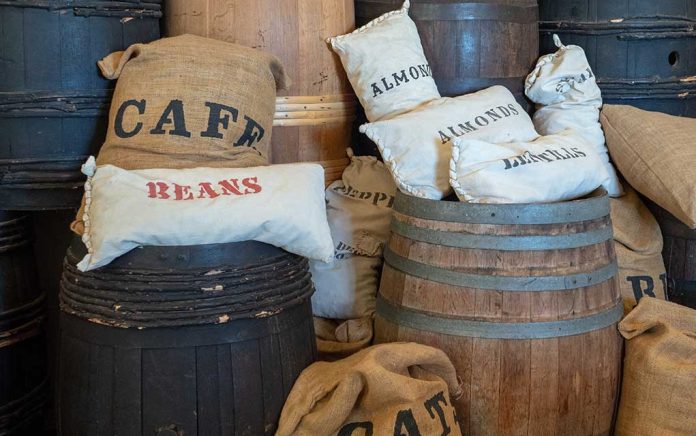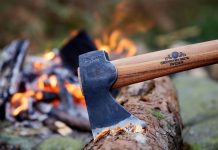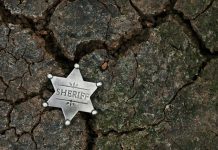What To Buy — And How Much
If you want to be prepared for disaster, you should aim to have at least three weeks of food (for every family member, including pets) in your emergency supplies. Three weeks of supplies should be enough to get you through most low- to mid-level crises — a bad storm, rioting, an earthquake or something of that magnitude.
If you want to be prepared for major, civilization-ending events, like nuclear war or the Yellowstone supervolcano blowing its top, you’ll need three months of supplies as a minimum. That will buy you enough time to start producing your own food or finding alternative sources.
Obviously, if we’re talking about even three weeks, it’s not something you can cover with fresh produce. You need to look at dried, canned and preserved foods to give you enough shelf life.
Most of the bulk of your supply will probably come from dried goods. The traditional prepper staples are rice, beans and pasta, which are all good sources of carbohydrates. Beans and rice together also supply a complete protein with all the amino acids your body needs. Don’t forget flour for bread-making and supplies of crackers or lifeboat bread. Oatmeal is another popular item.
Canned goods, including vegetables and meat, are also sources of protein. Vegetables can also supply a lot of the fiber you need while adding flavor and variety to your meals.
Cooking oil is the best source of fat. It has a long shelf life and it’s essential for a lot of cooking methods. It also supplies essential fatty acids your body needs.
Finally, don’t forget salt — you need some, daily, to survive — and seasonings. Bland meals will keep you alive, but they won’t do much for morale. Some spices and sauces will make food a lot more enjoyable.
Hitting the Right Balance
However long your food reserve is supposed to last, it needs to provide you with a balanced diet. The key nutrients you’re looking for are carbohydrates, protein, fiber and fat. A balanced diet that gives you all of these should also contain most of the vitamins and minerals you need.
Rotate to Keep them Ready to Go
You’ll also have to get into the habit of rotating food. That’s simple; if you need a can of beans, take it from the front of the shelf. When you buy a new can with more shelf life remaining, put it at the back.
If you rotate all of your staples, you’ll always have plenty at your fingertips and when disaster strikes, they’ll be fresh and you won’t doubt if things are still edible.
There are many ways to build up a reserve on the cheap — but rotation and keeping the supplies in your daily grocery budget is a great way to start.

















